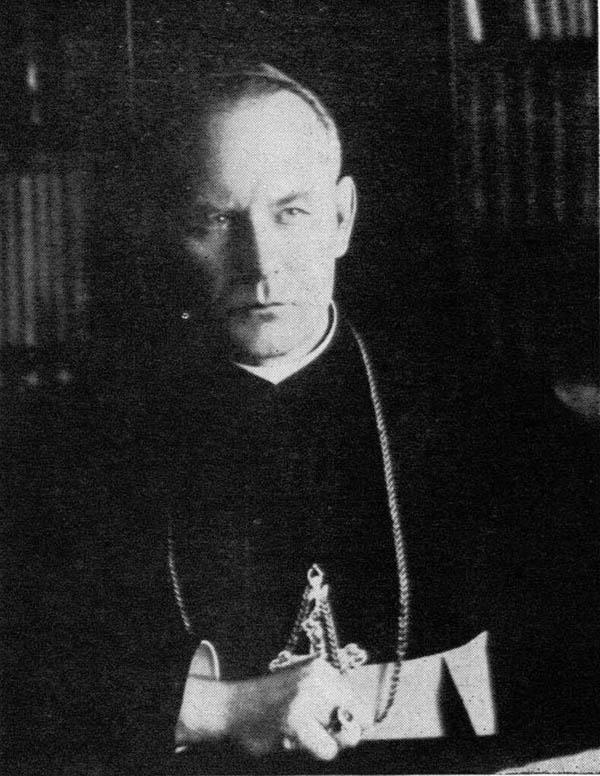
March, 1958 Vol. 4, No. 1
Managing Editor P. V. Vygantas
 |
www.lituanus.org |
| Copyright
© 1958 Lithuanian
Students Association, Inc. March, 1958 Vol. 4, No. 1 Managing Editor P. V. Vygantas |
|
THE DEATH OF BISHOP K. PALTAROKAS
 |
Bishop Kazimieras Paltarokas died in the Lithuanian capital of Vilnius on the night of January 3, 1958, at the age of 82. His funeral was an occasion of mourning for the whole nation, both those in Lithuania and those in the free world, and was attended by many churchmen, including the four remaining Lithuanian bishops and a Latvian bishop, as well as by the people of his flock. He was buried from the cathedral of his diocese of Panevėžys.
Bishop Kazimieras Paltarokas was born on October 22, 1875, the son of a farmer. He took his theological education at the Samogitian Theological Seminary in Lithuania and the Spiritual Academy of St. Petersburg (now Leningrad). After his consecration as a priest of the Roman Catholic Church on March 22,1902, Bishop Paltarokas spent a substantial part of his life as a teacher in grammar schools, high schools and seminaries. Wherever he taught, he left behind him an improved course of studies, for Bishop Paltarokas was not only a priest but a theologian and a social scientist as well.
His primary interests at this time were sociology and theology, and Bishop Paltarokas contributed largely to Lithuanian knowledge of these subjects. The bishop published more than 80 works, large and small, during his lifetime, and he left several completed manuscripts on his desk when he died. He wrote the substantial work Socialiniais klausimais (On Social Problems) and a sacred history of both the Old and New Testaments, as well as several pedagogical works.
The ecclesiastical province of Lithuania was created in 1926, under the concordat between the Vatican and the Lithuanian Republic. At that time, Bishop Paltarokas was consecrated bishop of the newly created diocese of Panevežys. His new duties prevented him from carrying on directly his work as a teacher, but he continued to teach and to influence the nation through his pastoral epistles and sermons. Bishop Paltarokas chose not to leave his country with the coming of the Second World War, and particularly when Russia occupied Lithuania for the second time, but to remain and suffer the fate of his flock. For a decade 1946 to 1956 he was the only bishop in Lithuania and, with his Latvian colleague, one of only two bishops in the Baltic states. The four other Lithuanian bishops, including Archbishop Reinys, were arrested and deported, and two of them, including the archbishop, suffered martyrdom somewhere in Siberia. In 1956 the two deported Lithuanian bishops who were still alive returned, and Bishop Paltarokas consecrated two new bishops. Although he never left his primary duties as head of the diocese of Panevežys, he was elected capitular vicar of the Vilnius archdiocese in 1949 and resided there until his death. Thus for almost nine years he was head of the Catholic Church in Lithuania.
He carried out his dual duties
faithfully in the face of continual provocation and obstruction on the
part of the Soviet rulers. Because of his courage he became a symbol of
Lithuanian resistance to Communist occupation. His name was frequently
used by the Communists for propaganda purposes and he was actually
forced to participate in a peace rally in Moscow, but even in the face
of this constant pressure he remained a stanch patriot and churchman
and a teacher for whom the nation truly mourns.